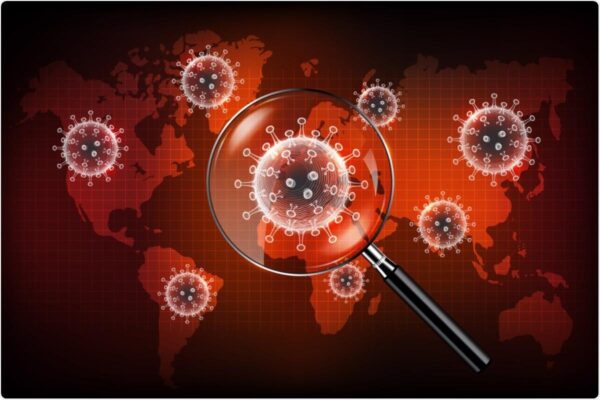Beijing, China: A sad case of a pregnant Chinese woman who has a miscarriage after tight locking delaying access to medical care has revived the debate over the Limit of China’s zero-tolerance approach to Covid-19.
The country where Coronavirus was first detected in 2019 now among the last places that still brought “zero covid”, put millions under quarantine even when Beijing prepares to host the winter Olympics next month.
How does China maintain ‘zero covid’?
China has a formula called “dynamic zero” for curbing outbreaks: tight key and direct bulk testing.
Unlike softer locking elsewhere, people in China can be prohibited from leaving their buildings or forced to stay in a hotel room if they are considered high-risk contacts.
The historic city of Xi’an, the house for the famous terracotta soldier, was locked in December, forcing 13 million residents in the room after around 150 cases were detected.
The same size of Zhengzhou tested each resident after only 11 cases.
International flights are a small portion of the pre-pandemic level with the arrival of quarantine throughout the strict week.
The track-and-trace application must mean the contact cap is usually detected and quarantined quickly.
Does it work?
Chinese officials since the beginning of the pandemic – only more than 100,000 – was a small part of a record of one million cases recorded by the US in the early day of this month.
The officially killed victim has lived below 5,000.
Although cases of the chaotic initial outbreak in Wuhan in the early 2020 are widely believed to have been reported, life since then most have returned to normal.
“There is still no ability to stop a single local case to emerge, but we have the ability and confidence to quickly put out the outbreak when local cases are found,” the official word of the National Health Commission Liang Wannian told reporters last month.
Who pays the price?
“Zero Covid” comes at a cost.
The border area, especially near Myanmar, has experienced almost constant locking and sees business exodus.
The locked community has complained of poor access to food, supplies and medical care.
Meanwhile, migrant workers are left stranded from families for months because of severe rules and restrictions on trips.
Heavy enforcement sometimes has sparked anger, like when health workers beat Corgi to death after the owner was sent to quarantine.
Analysts say repeated shutdown and business have contributed to the country’s slowdown, although China became the only major economy to develop by 2020.
Will China reopen?
“China certainly shows that it is feasible to continue the zero covid strategy almost indefinitely,” Ben Cowling, an epidemic expert at Hong Kong University, told AFP.
The state effectively compresses from the world in March 2020 and almost forbids foreigners to enter.
Since then, travel restrictions declined slightly.
But no international tourism and the government said it would not update the Chinese passport unless the holder had a good reason for traveling.
This country will not be reopened until at least after the winter Olympics and paralympics that will come in Beijing, with the government anxiously guard the capital and tighten the limits in front of the match.
Those who questioned “zero covid” had faced nationalistic reactions.
The leading Chinese medical expert Zhang Wenhong wrote in July that the countries finally had to “learn to coexist with viruses” – pushed attacks from online trolls.
What will happen if China is open?
Peking University researchers have warned China can suffer from “colossal outbreaks” which will flood their medical system if it loosens restrictions to the same level as Europe and the US.
But Ivan Hung, an expert of infectious diseases at Hong Kong University, said the second generation vaccine targeted the Delta and Omicron variants – and nearly 100 percent of vaccination rates – could counteract disaster.
In this scenario, “the possibility of Covid will change to be similar to influenza,” Hung said.
But letting the virus can be risky for President Xi Jinping when he searched the third term in October after collecting himself as a leader who would always be Chinese safe.
“When it comes, the transition may not be easy because the Chinese society is quite familiar with a low transmission rate,” said Thomas Hale University of Oxford told AFP.
